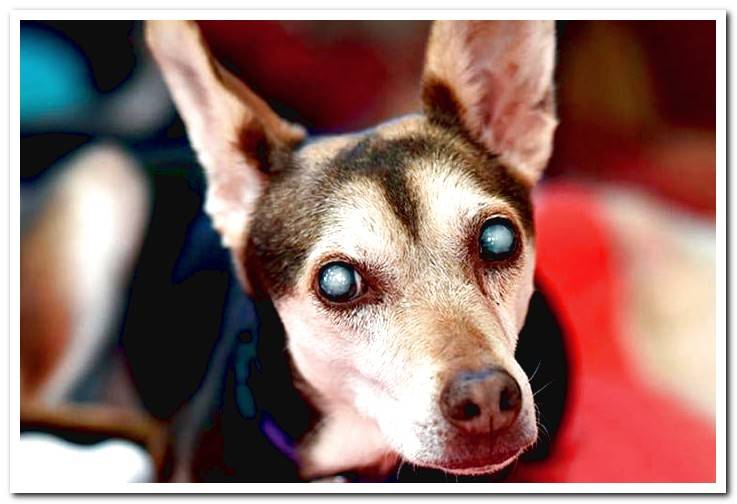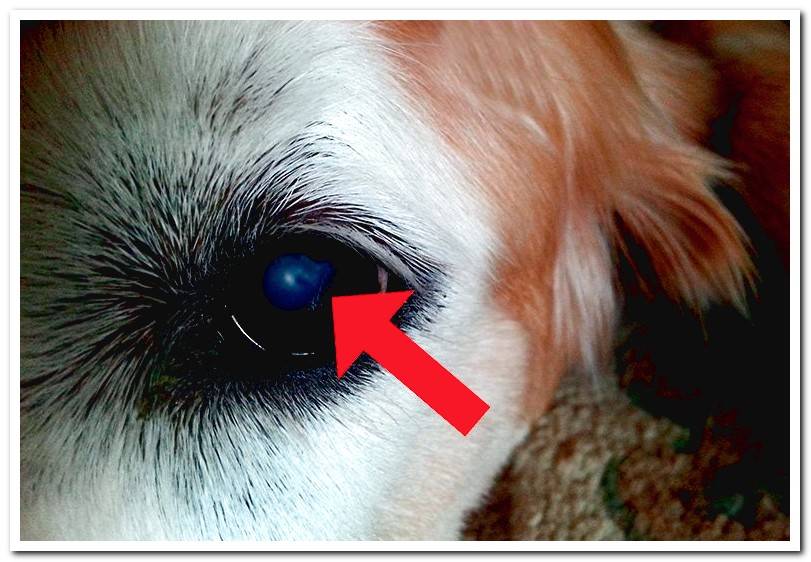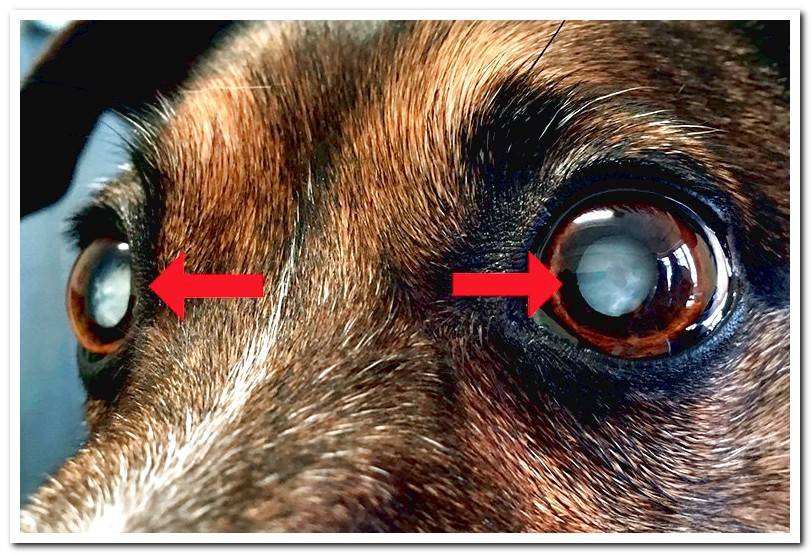
Cataracts are a serious ocular pathology, since they can cause blindness to the affected dog. And although they are more associated with older dogs, the truth is that they can occur at any age.
Thus, a distinction is made between congenital and acquired cataracts. Sometimes cataracts can be solved by surgery, allowing the dog to fully regain his sight. Want to know more details about how to treat cataracts?
Index of contents
- 1 What are canine falls?
- 2 Types of cataracts that can affect a dog
- 2.1 Juvenile congenital cataracts
- 2.2 Acquired falls
- 2.3 Senile Falls
- 2.4 Cataracts and nuclear sclerosis
- 3 Which dogs have cataracts?
- 4 What is the treatment to cure cataracts?
- 4.1 Postoperative of cataract intervention
- 5 How much does it cost to cataract a dog?
- 6 Can cataracts be prevented?
What are canine falls?
The falls are defined as the loss of normal transparency of the lens. It is easy to recognize them because we will see in the dog’s eye an opaque area of greater or lesser size. Specific, it is as if a film of a whitish gray tone is hidden from the eye. Most cataracts have a genetic origin.
They evolve within days or months. Finally, they are cause of blindness. They can be congenital or acquired. Also, cataracts can be complicated by inflammation, glaucoma, lens dislocation, pain, etc.

Types of cataracts that can affect a dog
Based on its characteristics, we can differentiate waterfalls into four different types. Not all of them can be treated by surgery, but we can delay their evolution with adequate treatment.
Juvenile congenital cataracts
Are those that occur in dogs less than six years old. They will affect both eyes, which does not imply that they appear in both eyes at the same time. They can develop at different rates.
Acquired falls
These are the ones will occur in older dogs as a result of aging. They also appear related to other diseases, such as uveitis or diabetes. Diabetic dogs are very prone to developing cataracts, also in a very short time.
In fact, cataracts are the most frequent complication of this disease. Its progress can be as fast as a few days or weeks and they are usually bilateral and symmetrical. The falls in the diabetic dogs they are a veterinary emergency.
Senile Falls
It is the name they receive cataracts that affect older dogs. It is of the main causes of blindness in them. They can appear in both eyes, although they develop at a different rate.
They are cataracts that can be seen, first of all, in the center of the eye and grow outwards until the entire lens becomes opaque. This is what is known as a mature cataract.
Cataracts and nuclear sclerosis
Known as nuclear sclerosis it is a degeneration of the normal lens and due to aging. It has nothing to do with the falls, although its external appearance reminds us. In sclerosis what happens is that new fibers are formed in the peripheral areas of the lens.
They exert pressure towards its center and it is this process that generates a bluish cloud, common in older dogs. Unlike cataracts, nuclear sclerosis does not cause blindness or vision disturbances.

Which dogs have cataracts?
All dogs can get cataracts, but, as there is a genetic component, we can identify some breeds that are more predisposed to suffer them. Highlights include the Cocker Spaniel, Boston Terrier, Fox Terrier, West Highland White Terrier, Miniature Schnauzer, Poodle, Siberian Husky, Golden Retriever, Bobtail, or Labrador Retriever..
What is the treatment to cure cataracts?
Cataract treatment involves operating quickly. The vet specializing in ophthalmology is the one who evaluates each case. Senile cataracts are left without surgery if the dog is very old, has pathologies and anesthesia is a high risk. An attempt is made to operate if both eyes are affected and the dog sees so badly that it is difficult for him to lead a normal life.
What the ophthalmologist does is remove the lens. The technique is called phacoemulsification (FACO), but there are others such as phacofragmentation or extracapsular extraction (ECLE), more recommended for mature cataracts. Without the lens, the dog is blurred but, at least, it maintains vision. There is also the possibility of replacing the lens with an artificial one.
On the other hand, juvenile cataracts may disappear spontaneously, generally over the course of a year. In these cases, the cataract is reabsorbed and the dog maintains the same vision as if it had undergone surgery. If surgery is not possible, you must medicate for life and follow a strict veterinary follow-up.
Postoperative of cataract intervention
After the operation, the vet will provide us with the necessary reviews depending on the evolution. Oral and topical antibiotics and anti-inflammatory drugs must be administered to reduce discomfort and prevent infection.
It is essential that the dog carry a Elizabethan necklace. We also have to prevent him from making any sudden movements, such as playing with toys or other dogs. If the operated dog lives with others, we must avoid licking his eye.
How much does it cost to cataract a dog?
The price of a cataract operation is high. Intervening only one eye is estimated, on average, at about 900 euros. If it is necessary to operate both, the quantity is doubled and, in addition, it must be taken into account that testing, revision and medication costs can be added. Before operating the vet has to explain in detail the procedure and the postoperative period.
We also have to be aware that the operation is not always successful. The FACO technique is reported as more effective and, in general, there
is talk of near 95% success. The intervention is considered to have been positive when the animal sees enough to lead a normal life.
If we decide to operate, contrary to the belief that it is necessary to wait for the cataracts to mature, we must do it as soon as possible. In this way a good result is more likely. Otherwise, the lens hardens and it is more difficult to remove it, and complications may arise in the operation and during the postoperative period, such as uveitis or glaucoma.
Can cataracts be prevented?
Hereditary cataracts can be avoided by not crossing sick dogs or carriers of this pathology. To identify these specimens, it is convenient to put yourself in the hands of veterinary ophthalmologists who will be in charge of the eye examinations and the pertinent tests.
